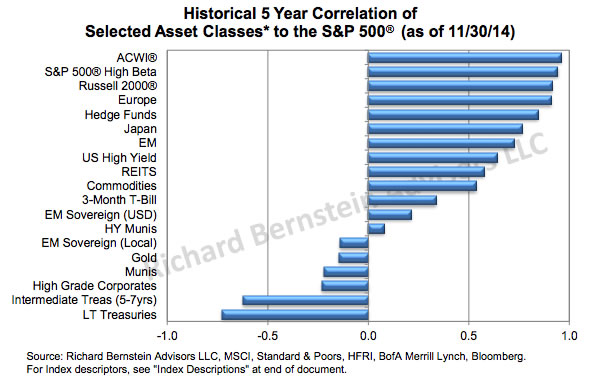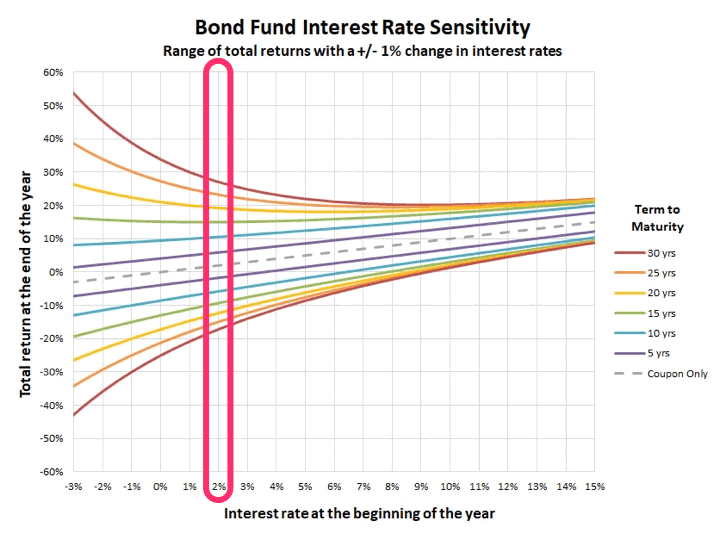Long-term US Treasury bonds are often considered a good asset class to own due to their . When stocks go down, long-term bonds tend to go up (and vice versa). While the 30-year is not specifically included here, you can infer this based on the Treasury bond data from this Morningstar table:
For example, here is an with correlations agains the S&P 500:

While doing some additional research on adding long-term US Treasuries to a portfolio, I came across the concept of bond convexity. It’s a relatively complicated topic… I mean here is the very first sentence of the :
In finance, bond convexity is a measure of the non-linear relationship of bond prices to changes in interest rates, the second derivative of the price of the bond with respect to interest rates (duration is the first derivative).
Yikes! Thankfully, the next sentence is easier to digest:
In general, the higher the duration, the more sensitive the bond price is to the change in interest rates.
Yet, if you truly want to understand convexity, that sentence is quite incomplete. This is especially the case in low-interest rate environments like we have now in 2021.
After reading through some seriously tedious explanations mixed with college calculus flashbacks, I thankfully found the article at PortfolioCharts.com. I recommend reading the full post for an approachable explanation with no greek letters. The prize at the end is this excellent graphic:

As of this writing 8/23/2021, the yield on the is 1.87%. Let’s round this to 2%. Based on this graphic:
- If interest rates were to drop by 1%, the 30-year bond would increase in value by roughly 27%.
- If interest rates were to rise by 1%, the 30-year bond would decrease in value by roughly 18%.
You may have though that since rates are so low already, any changes at this point won’t matter much. Turns out, they matter more. Long-term bonds can still pack quite a diversifying “punch” even at these low rates, both on the upside and downside (though not symmetrical). Those are some wild swings for “safe bonds”. This is definitely an interesting asset class, but be sure you know what you are getting into before purchasing.
“The editorial content here is not provided by any of the companies mentioned, and has not been reviewed, approved or otherwise endorsed by any of these entities. Opinions expressed here are the author’s alone. This email may contain links through which we are compensated when you click on or are approved for offers.”
from .
Copyright © 2004-2021 MyMoneyBlog.com. All Rights Reserved. Do not re-syndicate without permission.